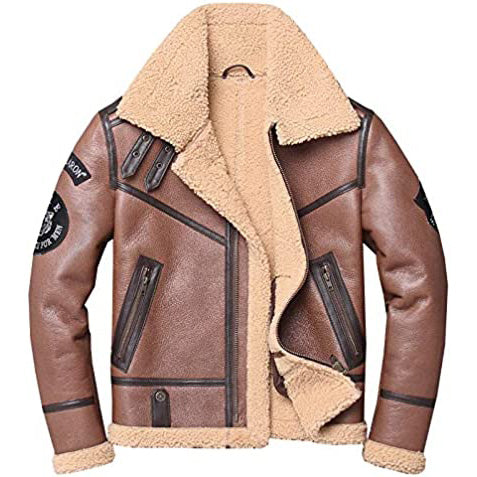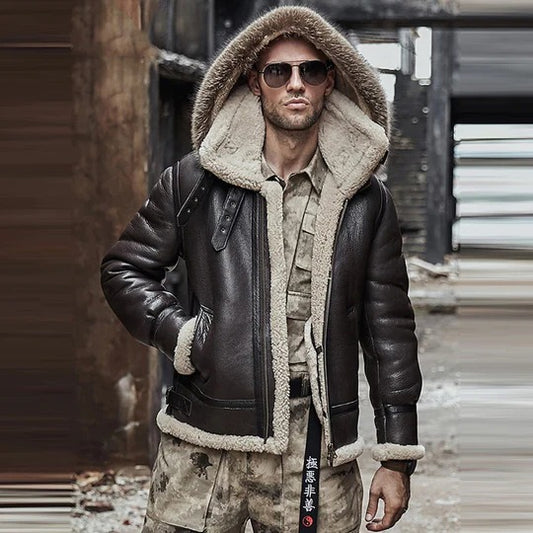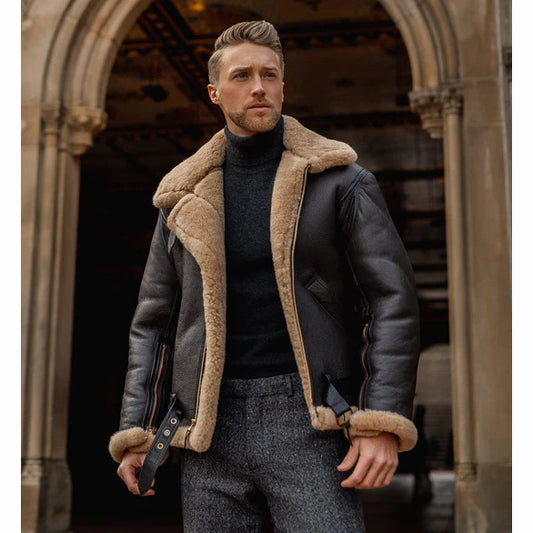When it comes to leather products, you’ll often hear about various types of leather used in jackets, shoes, and accessories. Nubuck leather, with its velvety finish and soft texture, stands out as a premium material. But what exactly is nubuck leather, and why should you care? In this comprehensive guide, we’ll explore everything you need to know about nubuck leather from its origins and features to how it compares with other leather types. By the end of this post, you’ll know why nubuck is a top choice for high-quality leather goods.
What is Nubuck Leather?
Nubuck leather is a type of top-grain leather made from the outer layer of animal hide, primarily from cows. What makes nubuck unique is its soft, velvety texture, achieved by sanding or buffing the outside of the hide to create a nap of short protein fibers. This process gives nubuck a matte, suede-like finish, but unlike suede, it’s more durable because it’s made from the tougher outer layer of the hide.
Characteristics of Nubuck Leather:
- Top-Grain Leather: Unlike full-grain leather, which remains unaltered, nubuck is top-grain leather that has been sanded to give it its signature texture.
- Velvety Texture: The sanding process gives nubuck its soft, velvet-like feel.
- Durable: Despite its delicate appearance, nubuck is robust and durable, making it ideal for high-use items like jackets, shoes, and bags.
- Natural Patina: Over time, nubuck develops a beautiful patina, adding to its appeal.
How is Nubuck Leather Different From Suede?
Nubuck is often confused with suede, but the two are quite different. Although both feature a soft, velvety surface, their production processes and durability vary. Here’s a quick comparison:
| Feature | Nubuck Leather | Suede Leather |
|---|---|---|
| Source | Top-grain leather | Split-grain leather |
| Durability | More durable, strong | Less durable, softer |
| Texture | Velvety, firm | Soft, fuzzy |
| Water Resistance | More water-resistant | Less water-resistant |
| Price | Higher | Lower |
Key Differences:
- Durability: Nubuck is more durable because it comes from the outer layer of the hide, while suede is made from the inner layers.
- Water Resistance: Nubuck offers better resistance to water and stains compared to suede, though it still requires care.
- Price: Nubuck is generally more expensive due to its higher quality and processing method.
How is Nubuck Leather Made?
The process of creating nubuck leather involves several intricate steps that ensure its soft texture and durability. Here's how it’s made:
- Selection of Top-Grain Hide: Nubuck is made from the outermost layer of the hide, known for its strength and quality.
- Sanding or Buffing: The surface of the hide is sanded or buffed to create a nap, resulting in the signature velvety texture.
- Finishing: Once the nap is created, the leather undergoes a finishing process that may include water-resistant treatments or dyes.
- Inspection: The final product is inspected to ensure quality and consistency in texture.
The result is a top-quality leather that looks great and is durable enough to withstand wear and tear.
Why Choose Nubuck Leather?
There are several reasons why nubuck leather is a preferred choice for high-quality products:
- Luxurious Feel: Its soft, velvety texture provides a luxurious feel that enhances the look and comfort of any product.
- Durability: Despite its delicate appearance, nubuck is strong and durable, making it ideal for everyday use in items like jackets and footwear.
- Natural Patina: Over time, nubuck develops a beautiful patina, giving it a unique and personalized look.
- Breathability: Nubuck is breathable, making it comfortable to wear in both warm and cool climates.
Benefits of Nubuck Leather:
- Soft, luxurious texture
- Durable and long-lasting
- Develops a unique patina
- Breathable and comfortable
How to Care for Nubuck Leather
While nubuck leather is durable, it requires specific care to maintain its texture and appearance. Here are some tips on how to care for your nubuck leather products:
- Use a Nubuck Brush: To maintain the texture, use a nubuck brush to gently clean the surface and remove dirt.
- Avoid Water Exposure: Nubuck is susceptible to water stains, so it’s important to use a water repellent spray to protect it.
- Clean Stains Promptly: For stains, use a specialized nubuck cleaning solution and a soft cloth to remove them.
- Store Properly: When not in use, store nubuck items in a cool, dry place away from direct sunlight.
Care Tips:
- Regularly brush the leather to maintain the texture.
- Apply a waterproofing spray to protect against water damage.
- Clean stains promptly to prevent them from setting in.
Nubuck Leather Products and Their Popularity
Nubuck leather is widely used in various products due to its unique features. From jackets to shoes, here are some common uses:
- Jackets: Nubuck leather jackets are popular for their luxurious feel and durability. Brands like Jackets Kingdom offer top-quality nubuck jackets that stand the test of time.
- Footwear: Nubuck shoes and boots are highly durable and provide a stylish, sophisticated look.
- Bags and Accessories: Nubuck leather is also used in handbags, wallets, and belts for a touch of elegance.
The appeal of nubuck leather lies in its ability to combine luxury with practicality, making it a top choice for premium products.
Pros and Cons of Nubuck Leather
Before investing in nubuck leather products, it’s important to weigh the pros and cons:
Pros:
- Luxurious Texture: Soft and velvety, nubuck offers a high-end feel.
- Durability: Stronger than suede, nubuck is built to last.
- Unique Appearance: Develops a natural patina over time, adding to its character.
Cons:
- Maintenance: Requires regular care to maintain its texture.
- Susceptible to Stains: Can easily stain if not properly treated.
- Higher Cost: More expensive than other leather types like suede.
Expert Opinion on Nubuck Leather
Leather experts often recommend nubuck for those seeking a balance between luxury and durability. According to industry professionals:
“Nubuck leather is a fantastic option for those who want the softness of suede but the durability of top-grain leather. It ages beautifully, making it a great long-term investment.” – Leather Artisan, Jack Harper
This combination of features makes nubuck a top contender in the leather world, especially for fashion-forward individuals.
Comparative Analysis: Nubuck vs Other Leathers
To better understand where nubuck stands in comparison to other leather types, here’s a breakdown of how it compares:
| Leather Type | Texture | Durability | Water Resistance | Price |
|---|---|---|---|---|
| Nubuck | Soft, velvety | Durable | Moderate | Higher |
| Suede | Soft, fuzzy | Less durable | Low | Lower |
| Full-Grain | Smooth, firm | Extremely durable | High | Highest |
| Bonded | Coarse, artificial | Less durable | Low | Lowest |
As you can see, nubuck offers a unique balance between luxury and durability, making it a superior choice for those seeking quality leather products.
FAQs About Nubuck Leather
Q1: Can nubuck leather get wet?
- Nubuck leather can get wet, but it’s prone to staining. It’s best to use a waterproofing spray to protect against water damage.
Q2: How do you clean nubuck leather?
- Use a nubuck brush and specialized cleaner to remove stains and maintain the texture.
Q3: Is nubuck leather more expensive than suede?
- Yes, nubuck is generally more expensive than suede due to its top-grain source and processing method.
Q4: How does nubuck leather age over time?
- Nubuck develops a natural patina, which adds character and enhances its appearance over time.
Q5: Is nubuck leather sustainable?
- Nubuck can be sustainable if sourced responsibly, as it’s a by-product of the meat industry.
Conclusion
Nubuck leather is a premium material that offers a perfect blend of luxury, durability, and style. Its velvety texture and unique aging process make it a sought-after choice for leather enthusiasts. Whether you’re looking for a high-quality jacket or durable shoes, nubuck is a reliable and stylish option.
For the best selection of nubuck leather jackets and accessories, visit Jackets Kingdom — where luxury meets durability.





